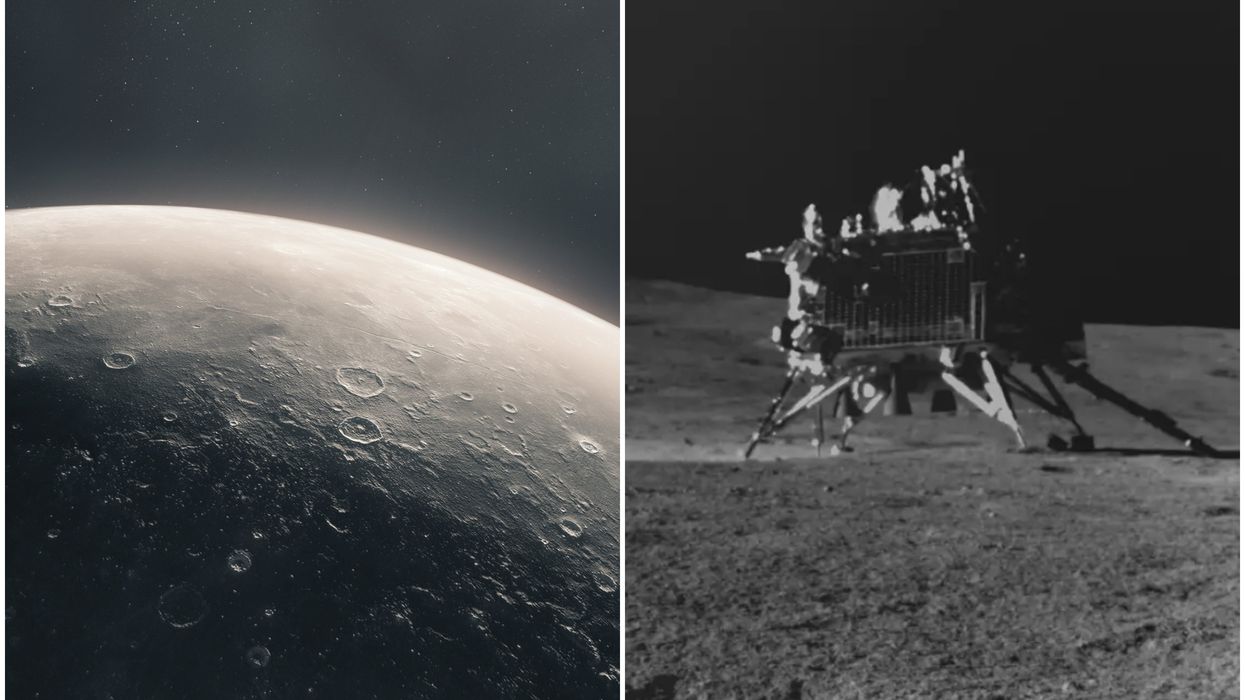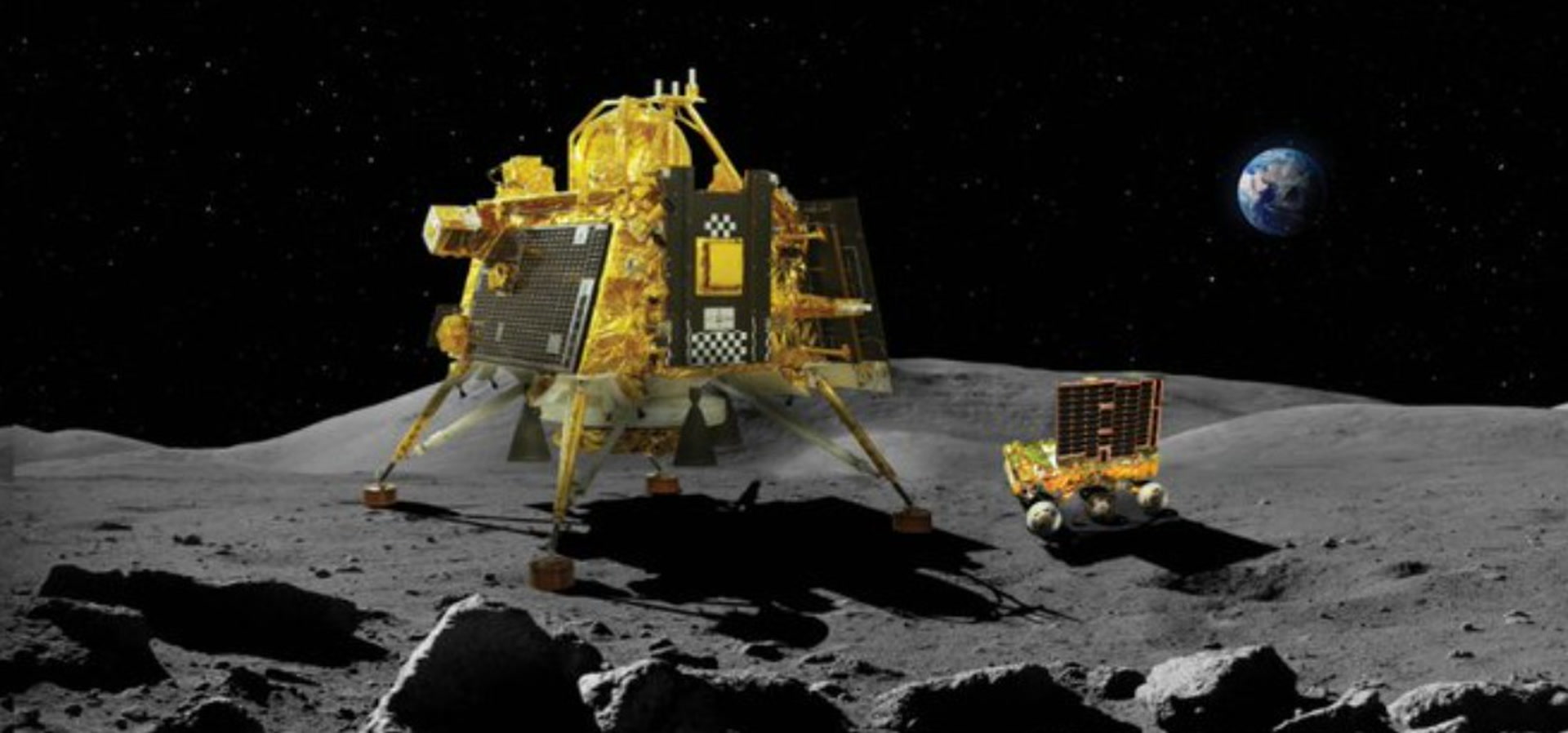
Chandrayaan-3 (right) landed on the Moon on 23 August
ISRO/iStock
India’s Chandrayaan-3 lander only touched down on the Moon a month ago, but already it's made some major contributions to science.
The spacecraft arrived on the satellite's unexplored south pole on 23 August, securing India's place as the first country to achieve this ambitious feat.
Its rover, named Pragyan (or "wisdom" in Sanskrit) then embarked on an exploration of the rocky terrain, equipped with two instruments for conducting chemical experiments.
And now, India's space agency, the ISRO, has published the ground-breaking data collected by the bold robot.
Pragyan's findings offered a new, detailed insight into what makes up the lunar soil.
And whilst scientists were unsurprised by the presence of iron, titanium, aluminium and calcium in the rocks, they were stunned to note a much higher concentration of sulphur than expected.

The discovery is significant for a number of reasons. Most significantly, perhaps, because the sulphur could be used to help create a human base on the Moon.
As Jeffrey Gillis-Davis, a planetary scientist, pointed out in a piece for Science Alert: "Astronauts and robots could travel from the south pole base to collect, process, store and use naturally occurring materials like sulfur on the Moon – a concept called in-situ resource utilization.
"In-situ resource utilization means fewer trips back to Earth to get supplies and more time and energy spent exploring. Using sulfur as a resource, astronauts could build solar cells and batteries that use sulfur, mix up sulfur-based fertilizer and make sulfur-based concrete for construction."
Gillis-Davis went on to explain that sulfur-based concrete has a number of advantages over the more common variety used in building, pointing out that it "hardens and becomes strong within hours rather than weeks, and it's more resistant to wear".
"It also doesn't require water in the mixture, so astronauts could save their valuable water for drinking, crafting breathable oxygen and making rocket fuel," he added.
The presence of sulphur near the Moon's south pole also suggests that highland soils at the lunar poles could have very different compositions to highland soils at the lunar equatorial regions.
This would have key implications for our understanding of how the Moon works as a geological system, given that sulfur mainly comes from volcanic activity.
Still, there's plenty of work to be done. And while this is all just one small step in Chandrayaan-3's mission, it could mean a great leap in how we view our dear celestial companion.
Sign up for our free Indy100 weekly newsletter
Have your say in our news democracy. Click the upvote icon at the top of the page to help raise this article through the indy100 rankings.
Top 100
The Conversation (0)













